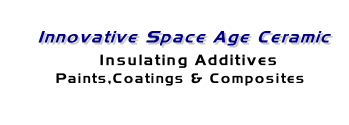Protect Your Children from Poison Treated Wood
Since the 1940's, lumber producers and manufacturers have used a chemical compound mixture containing inorganic arsenic, copper, and chromium called chromated copper arsenate (CCA) as a wood preservative.
Manufacturers inject CCA into wood by a process that uses high pressure to saturate wood products with the chemicals, creating what the public knows as "pressure-treated lumber."
Over 90 percent of all outdoor wooden structures in the United States are made with this arsenic-treated lumber. In nationwide tests, dangerous levels of arsenic were found on the surface of "pressure treated" wood purchased at The Home Depot and Lowe's Home Improvement Warehouse.
Arsenic sticks to children's hands when they play on treated wood, and is absorbed through the skin and ingested when they put their hands in their mouths. Children who rub their hands on a tiny surface area of new or old playground equipment have a one-in-10 chance of coming into contact with 10 times as much arsenic as the EPA drinking water standard allows.
A new study warns that arsenic used to treat outdoor wood products doesn't dissipate with time and that children who play on decade-old equipment are as likely to be exposed to high levels of the potential cancer-causing agent as are those who play on structures manufactured recently.
It has been estimated that one out of every 500 children who regularly play on swing sets and decks made from arsenic treated wood, or one child in an average size elementary school, will develop lung or bladder cancer later in life as a result of these exposures.
What to do?
Encapsulation... or the application of a liquid coating that dries to form a watertight jacket over the treated lumber, it is easy, cost effective, and homeowner friendly. It is applied like paint, and can be done by the homeowner. Encapsulation also provides long-lasting effects such as a beautiful, paintable, and tintable finish that protects the wood and preserves architectural details.
Basically encapsulation is wrapping the existing lumber in a continuous rubber like membrane like ENCAPSULGUARD.
Hy-Tech's ENCAPSULGUARD coating look much like regular paint but goes on 5 times thicker than paint and does not dry hard and brittle but more like a soft rubber coating that expands and contracts with the lumber movement.
Recommend Application for Pressure Treated Wood:
Prime first with one coat of Stain Blocker stain sealing primer be applied. Stain Blocker will prevent the green color from bleeding through the finish coats and stop the suction on gray, well weathered lumber. Allow the primer to dry 24 hours and then apply two coats of ENCAPSULGUARD elastomeric coating at a spread rate not to exceed 100 sq feet per gallon. The purpose here is to wrap the lumber in a thick elastic membrane, "encapsulating" the toxins. Once cured the ENCAPSULGUARD dries to a tough film that has tremendous adhesion, superb durability and its flexibility allow it to withstand the constant expansion and contraction of the wood. ENCAPSULGUARD is very low in VOC's containing only enough chemical to help the coating cure.
ENCAPSULGUARD is easily applied by brush, roller or spray.
On February 12, 2002, the EPA announced a voluntary decision by the lumber industry to move consumer use of treated lumber products away CCA-treated wood by Dec. 31, 2003, in favor of new alternative wood preservatives. This transition affects virtually all residential uses of wood treated with CCA, including wood used in play-structures, decks, picnic tables, landscaping timbers, residential fencing, patios and walkways/boardwalks. According to this announcement, by January 2004, EPA will not allow CCA products for any of these residential uses.


We Supply the Solutions
You Just Need to Apply Them
|
|
|



